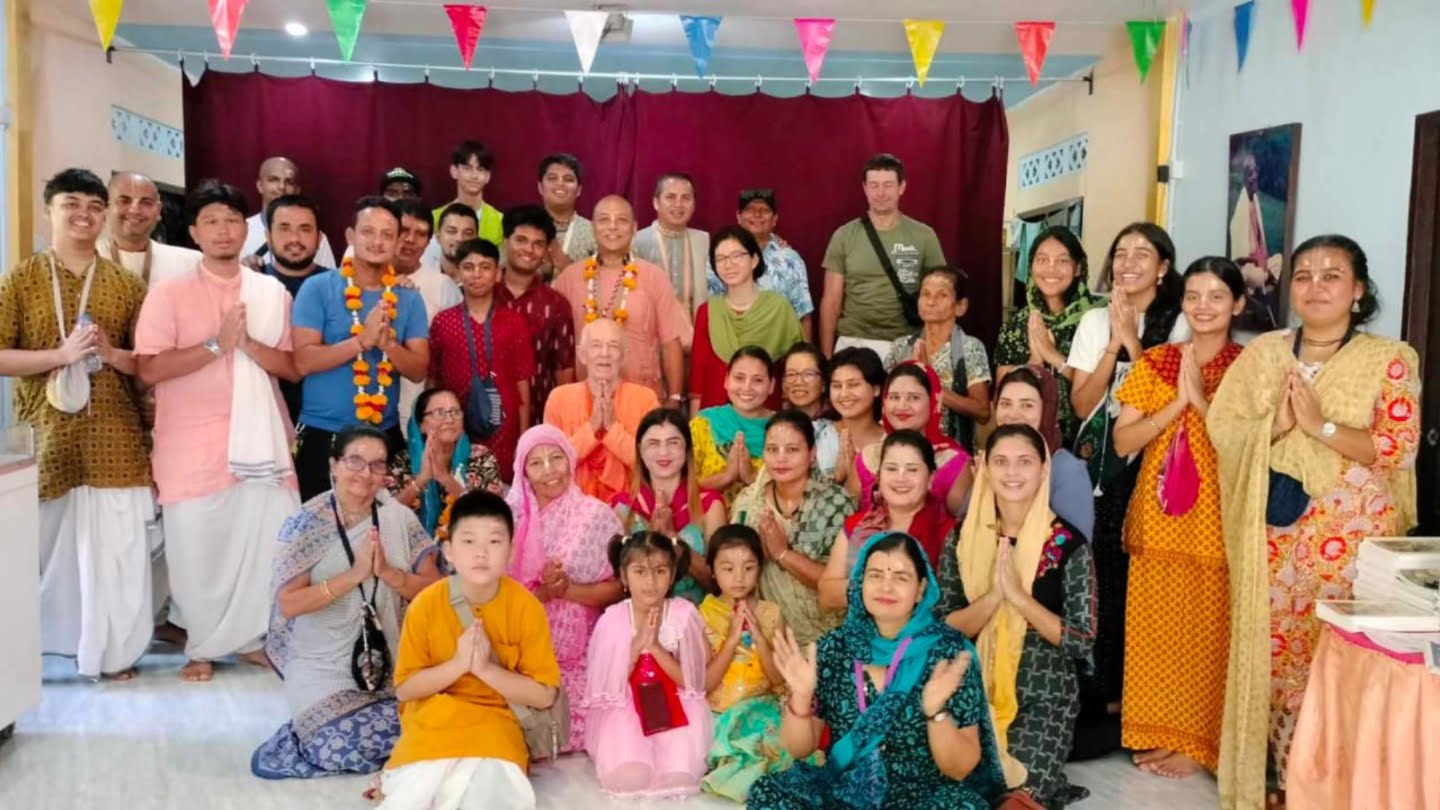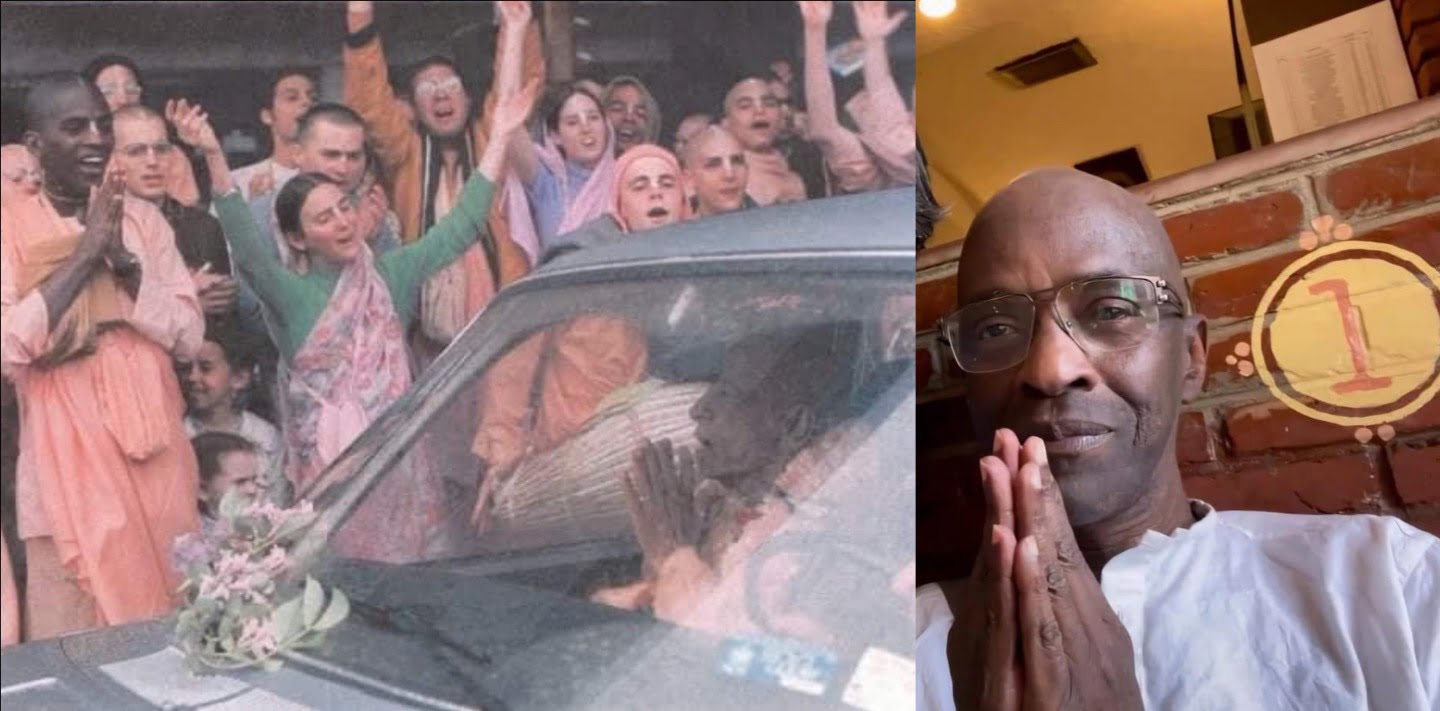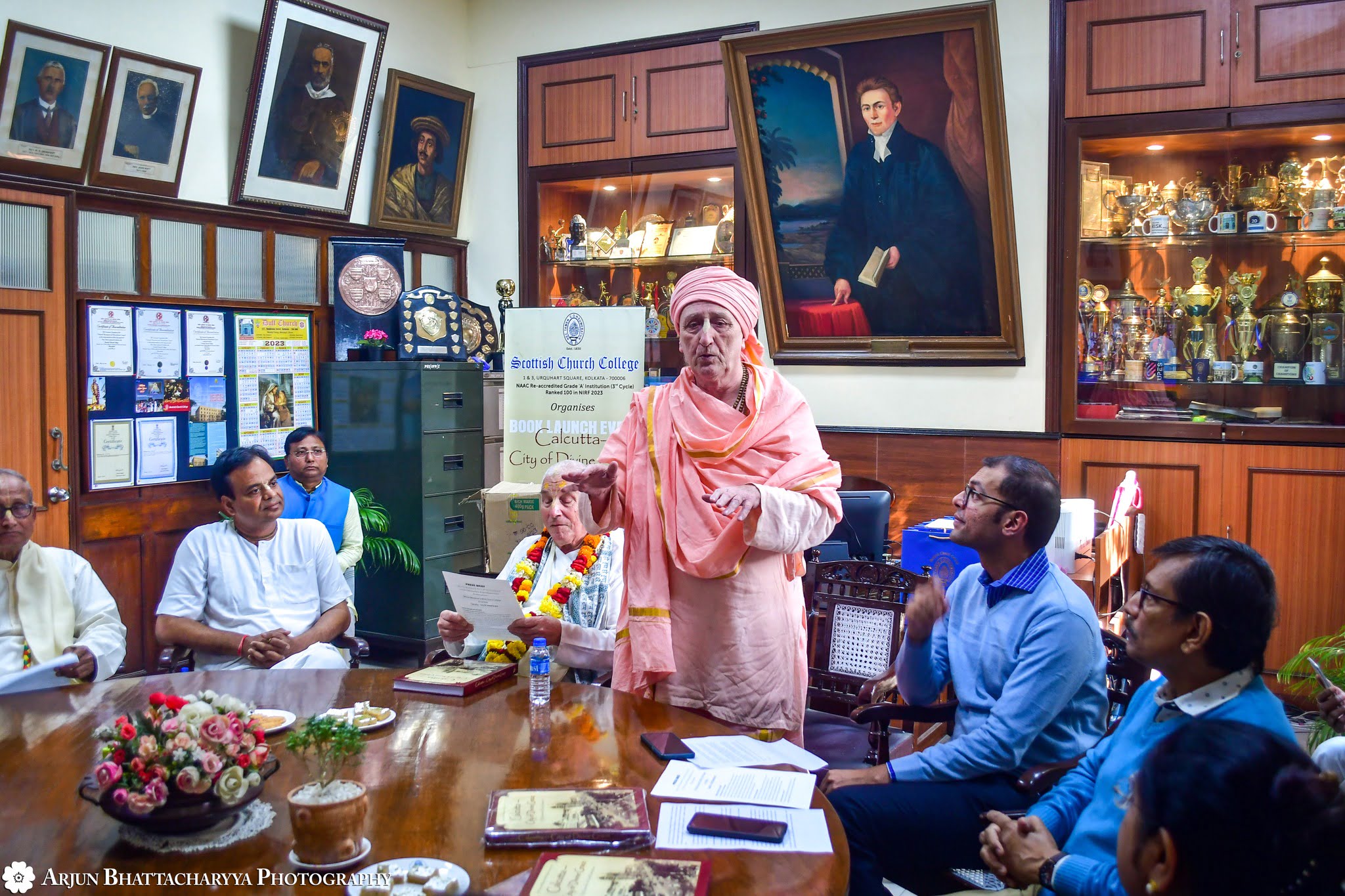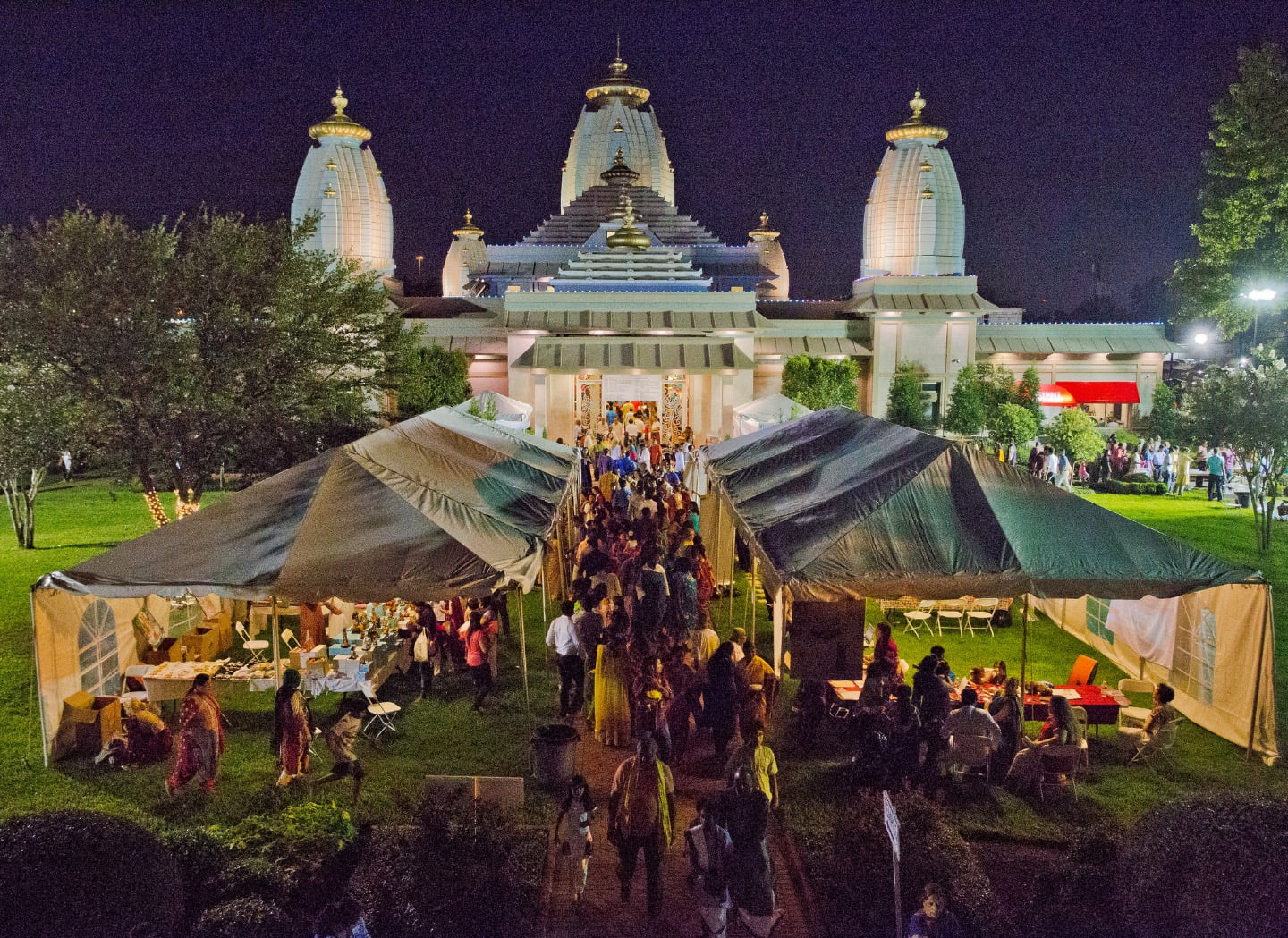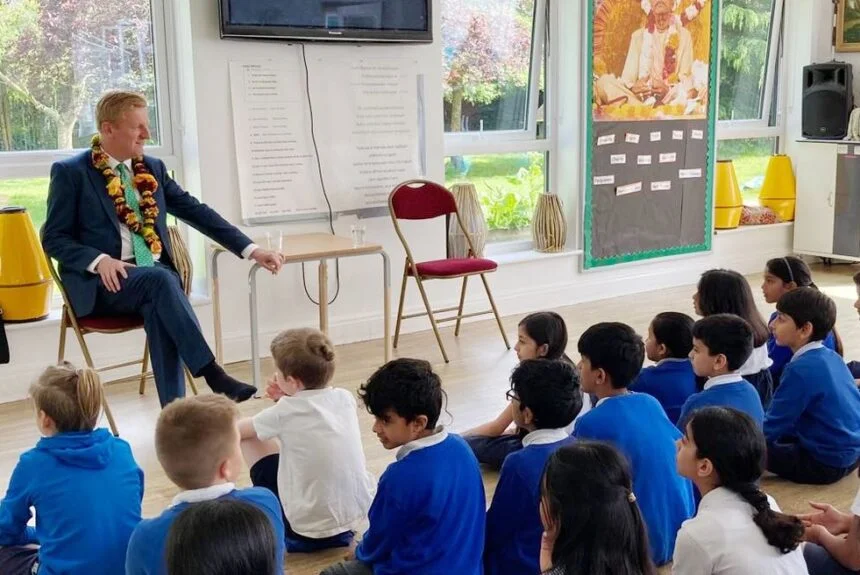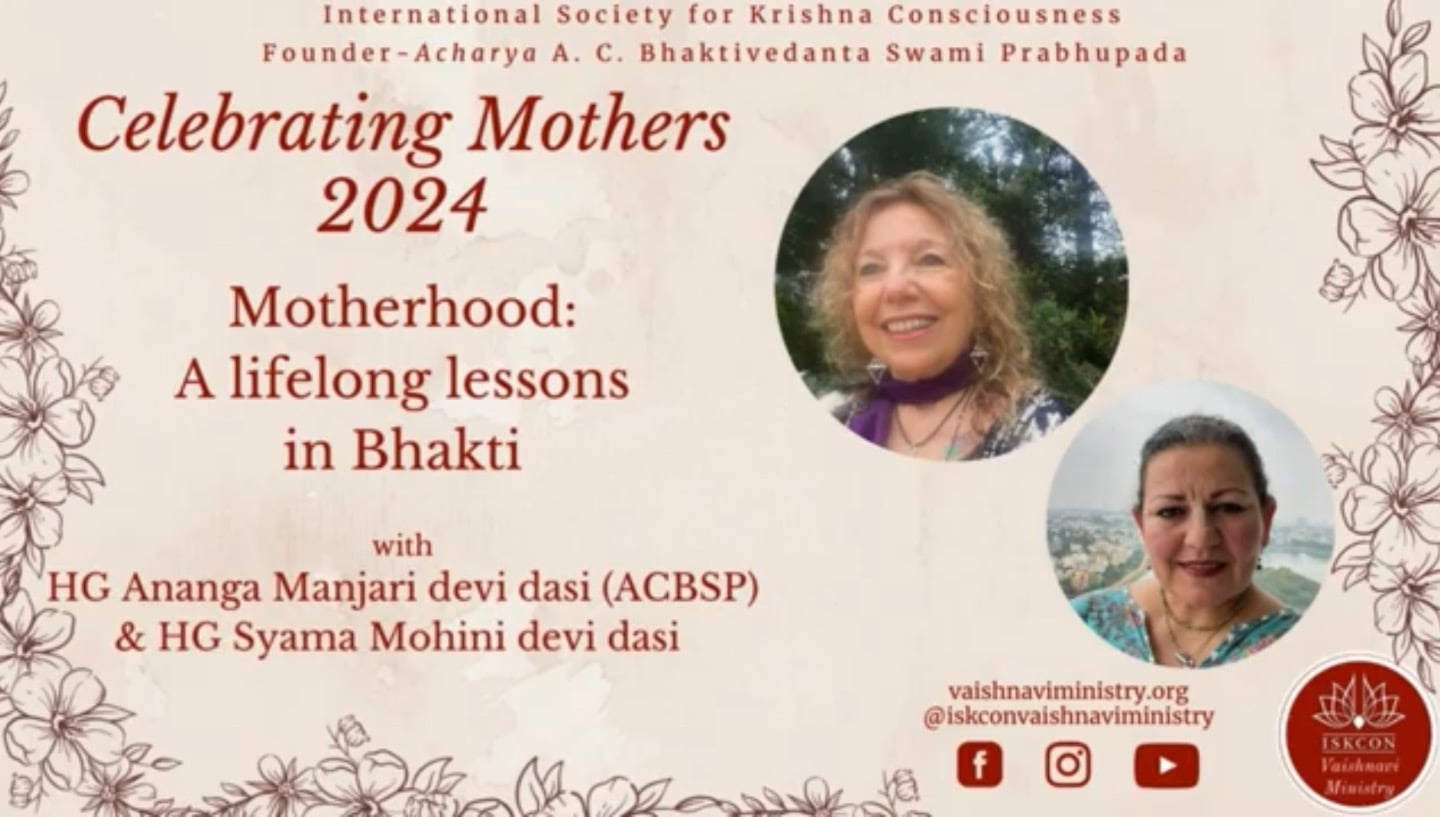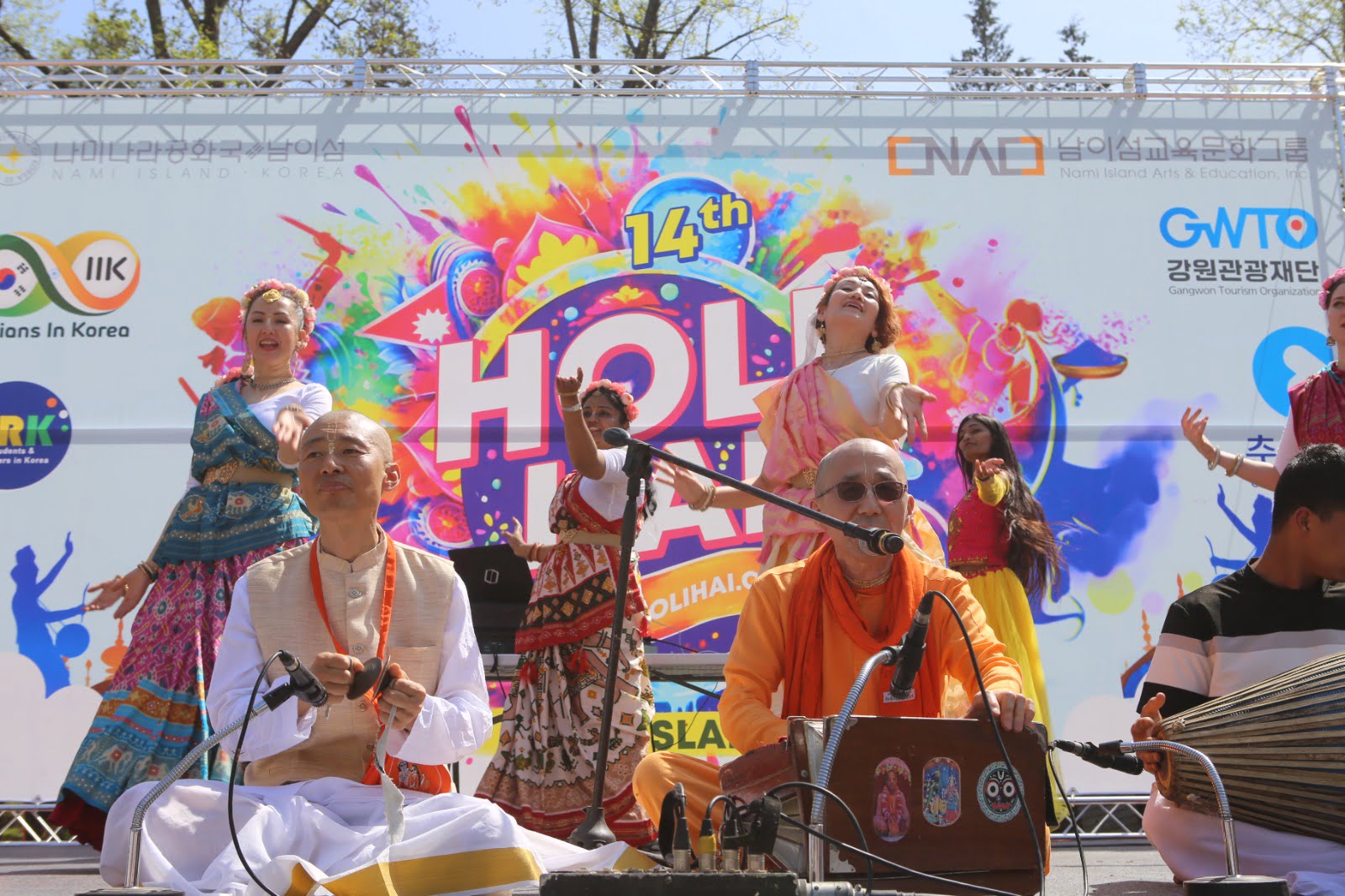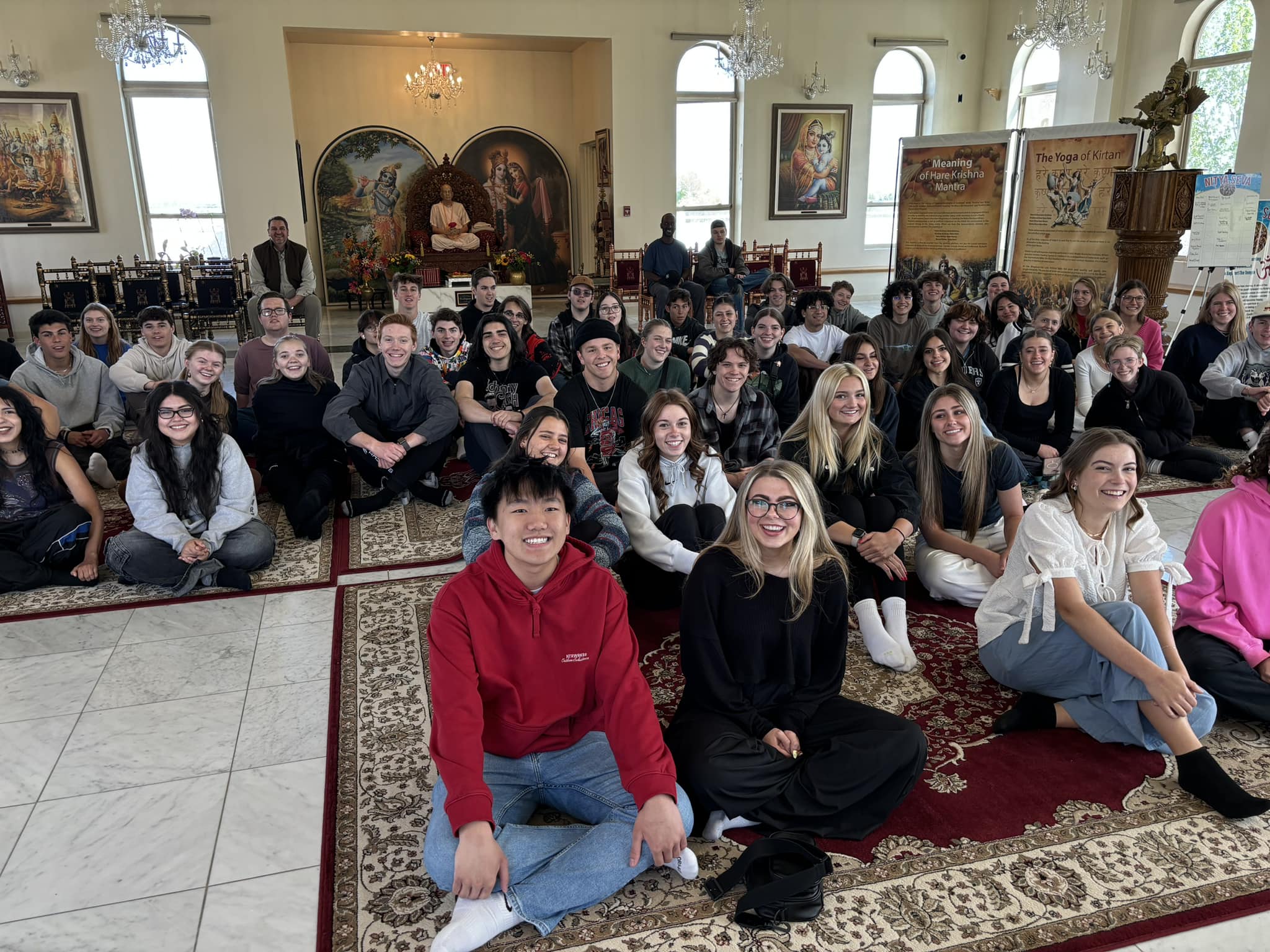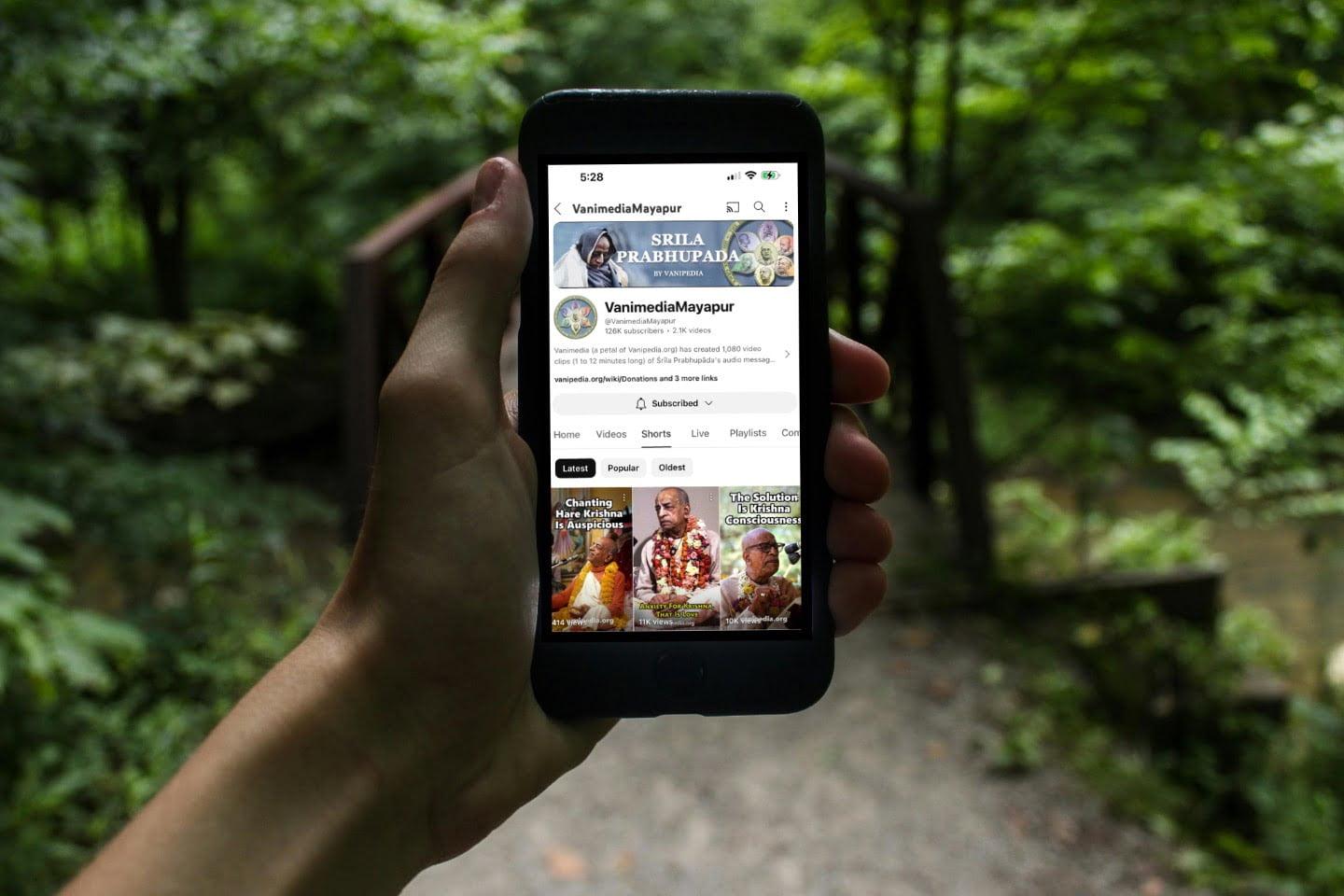Temple Profile: Budapest, Hungary
By Madhava Smullen | Feb 27, 2014

Name: Hare Krishna Educational and Cultural Center
Address: Hungary, 1039, Budapest, Lehel Street 15-17.
Phone: +36 30 2895981
Website: www.budapestturizmus.krisna.hu
Presiding Deities: Sri Sri Dayal Nitai Vijaya Gauranga
Temple Director: Gauramani Dasa
Opened in: March 2006.
Temple Style: A former elementary school and home to the electronics company Samsung, the Budapest Hare Krishna Educational and Cultural Center is one of the smartest and most welcoming ISKCON centers in the world. With a bright white and yellow exterior and a spotless interior that looks like a combination of modern museum and Indian palace, it’s perfect for welcoming members of the public and high profile guests.
Location: A prestigious suburban part of Budapest known as Csillaghegy. Just 15 to 20 minutes’ drive from the city center, it is close to the River Danube and is very calm and peaceful.
Known For: Its beautiful Deities, as well as the state-accredited Bhaktivedanta College next door, which teaches Vaishnava theology and yoga.
Number of residents: Twenty-two celibate students (sixteen male and six female), four full-time married couples engaged in direct management and preaching activities, and 200 congregational devotees.
Number of visitors: 1,000 new visitors every year.
Best time of year to visit: Summer, (May to September) when many senior Srila Prabhupada disciples visit. (Budapest is conveniently located on the way to US and India.) An annual Ratha Yatra Festival is held in downtown Budapest in early July.

Temple Director Gauramani Das below the Hare Krishna mantra inscribed on the side of the building
ISKCON devotees first began travelling to Hungary incognito in the 1970s, when the country was communist and all religion was illegal. By the 1980s, GBC Sivarama Swami joined them, swapping out his saffron robes for a wig and conventional clothes.
In 1989, when the regime changed and Hungary became a democracy, ISKCON was registered as a legal religion.
“It was a real explosion,” says ISKCON Budapest Director Gauramani Das. “After forty years of communism, people were very thirsty for real knowledge, and were very attentive to what devotees had to say.”
Programs were held at different members’ apartments, before a larger family house in Budapest’s 2nd district was turned into the city’s first temple in 1991, with funding from book distribution.

The center is as beautiful and well-kept as a museum
With Sivarama Swami heading up the project, small Gaura Nitai Deities were installed in 1993, and then larger Deities in 1994.
A second center was launched in a different district of Budapest, but merged with the original one in 1999. The congregation continued to expand, and in 2000 the search for a new, larger building began.
It took until 2004 for devotees to find exactly what they were looking for, and another two years to refurbish the building in time for a Grand Opening on Gaura Purnima (March) 2006. But it was worth it.
The property ISKCON Budapest now calls home was originally built as an elementary school in the early 1900s, then purchased in the 1980s by electronics company Samsung, which added another building and bridged the two with an internal walkway.

The center is filled with reflective glass, chandeliers and reflective marble floors
Looks-wise, the Budapest Hare Krishna Educational and Cultural Center is one of the smartest and most welcoming ISKCON centers in the world, often eliciting ‘wows’ of admiration from visiting devotees and members of the public alike.
The exterior looks like that of a modern library or town hall, with bright white and yellow walls, orange-umber window trim, an attractive sign bearing ISKCON’s tilak and lotus logo, and the full Hare Krishna mantra in large relief lettering down its side.
The interior is like a combination of modern museum and Indian palace. It is spotlessly clean, airy and full of sunlight from the skylights in the ceiling. And it’s filled with chandeliers, glass, shining reflective Italian marble floors, hand-painted furniture from Gujarat, and a stunning marble altar for Sri Sri Dayal Nitai Vijay Gauranga.
Once devotees opened this center, they began focusing on building their community.
“In 2010, we introduced a version of the Counselor System used in ISKCON Chowpatty, Mumbai, and we have a congregation of 200 devotees who participate in it,” says Gauramani. “We also have other devotees who are not so closely linked with the temple but still come on a regular basis to our programs and festivals.”

A diorama of Lord Krishna on Govardhana Hill decorates the lounge
After making sure that the devotees in the community were happy and taken care of, ISKCON Budapest managers began putting more energy into outreach.
Their state-accredited Bhaktivedanta College, which sits next door in a renovated eighty-year-old villa, offers a BA in Vaishnava Theology, and has a Bhaktivedanta Library stocked with 15,000 books on Indian and religious studies.
“Most of our students are not ISKCON members – they come from all walks of life,” Gauramani says. “But many of them become devotees.”
Many people also visit the temple itself directly, and are given a special tour – there are about 1,000 new visitors every year.
“We engage them in kirtan and chanting, which they really like,” says Gauramani.

The altar
ISKCON Budapest also attracts people by offering courses on cooking, philosophy and ayurveda, connects with youth at music festivals, and offers classes for newcomers enrolled in the “bhakta program” every Sunday.
Prasadam distribution is also a major operation in Budapest. There are three Govinda’s restaurants in the city, and the local Food For Life distributes an impressive 1,200 plates of sanctified vegetarian food to the needy every day, six days per week.
Meanwhile the prasadam that devotees themselves consume and offer to their Deities is first class: all dairy dishes are made only with ahimsa milk from protected cows at the Krishna-Valley farm in Somogy County.
Further outreach activities that ISKCON Budapest is focusing on include expanding its bhakta program and book distribution efforts.
“We also have plans to build more guest rooms, as well as a 300-seat auditorium,” Gauramani says. “And this year, we will be introducing a Masters Degree at our Bhaktivedanta College, which is on its way to becoming a university.”

The beautiful Deities of Sri Sri Dayal Nitai Vijaya Gauranga





